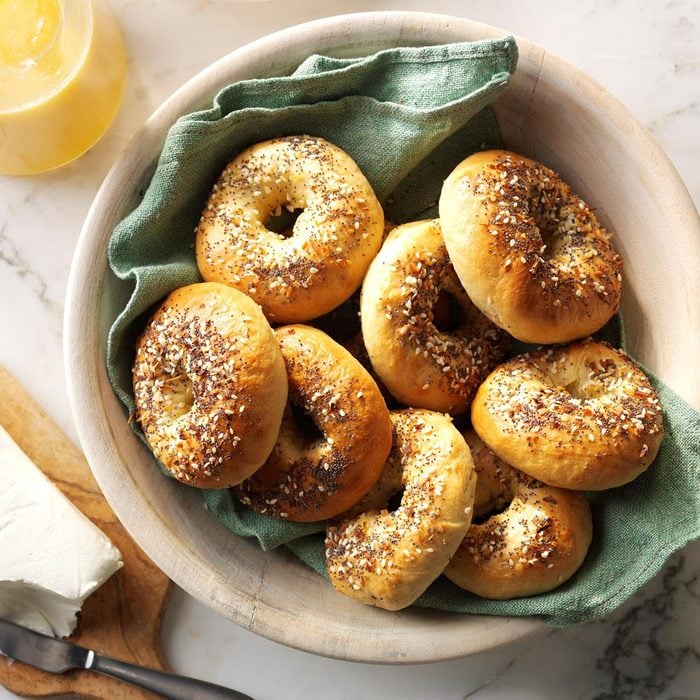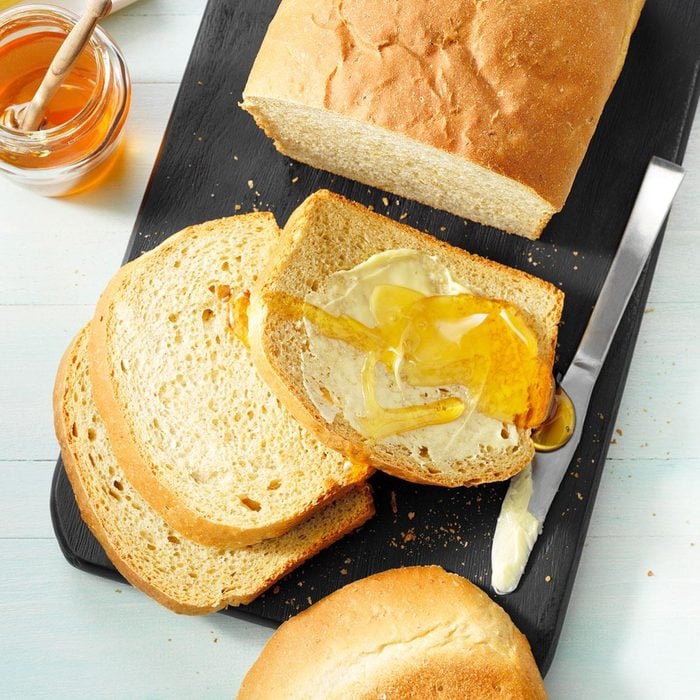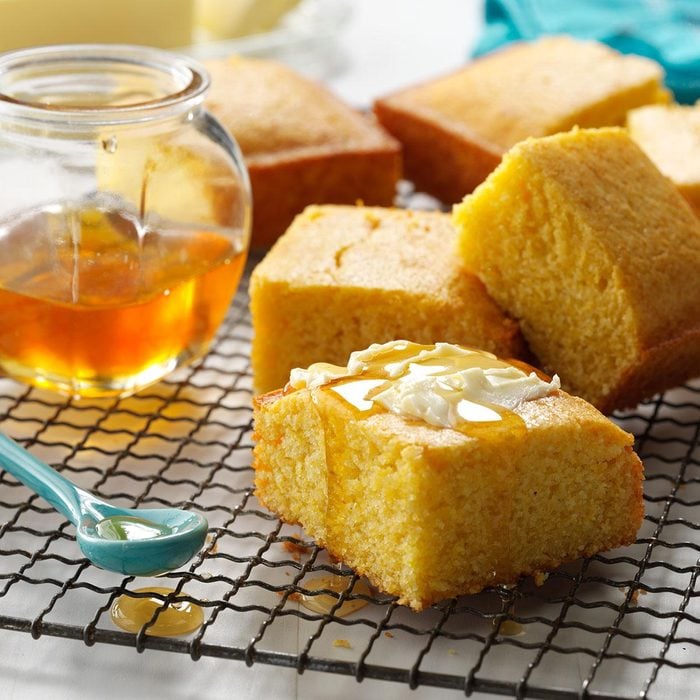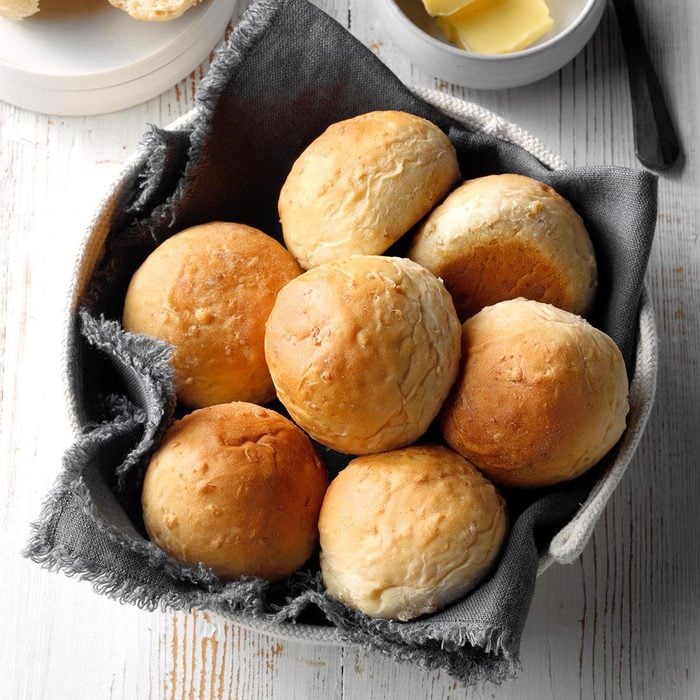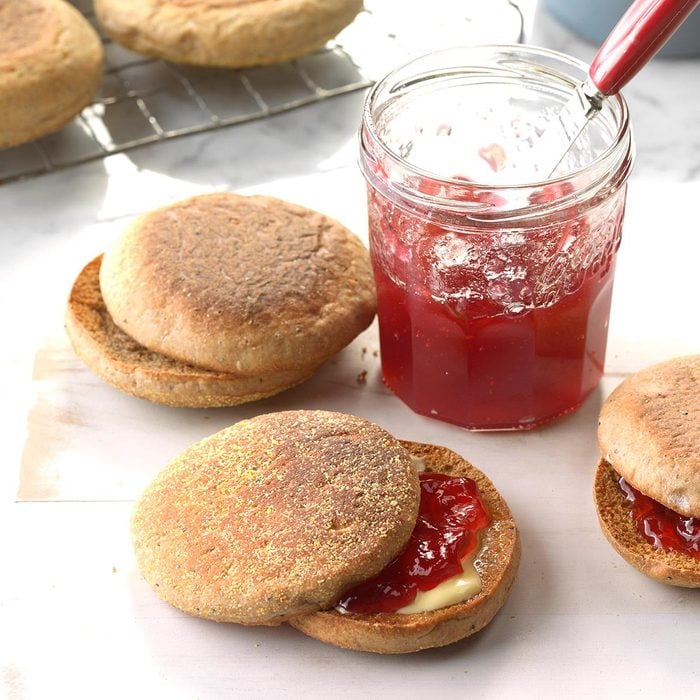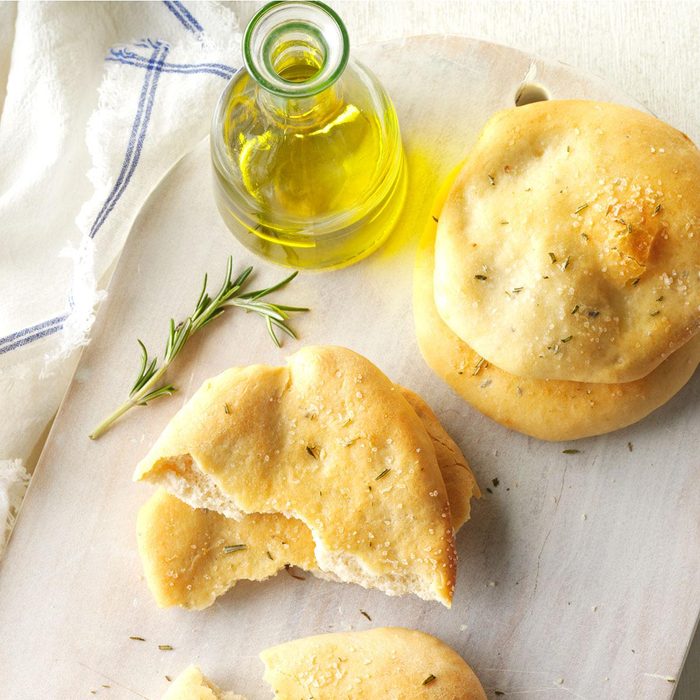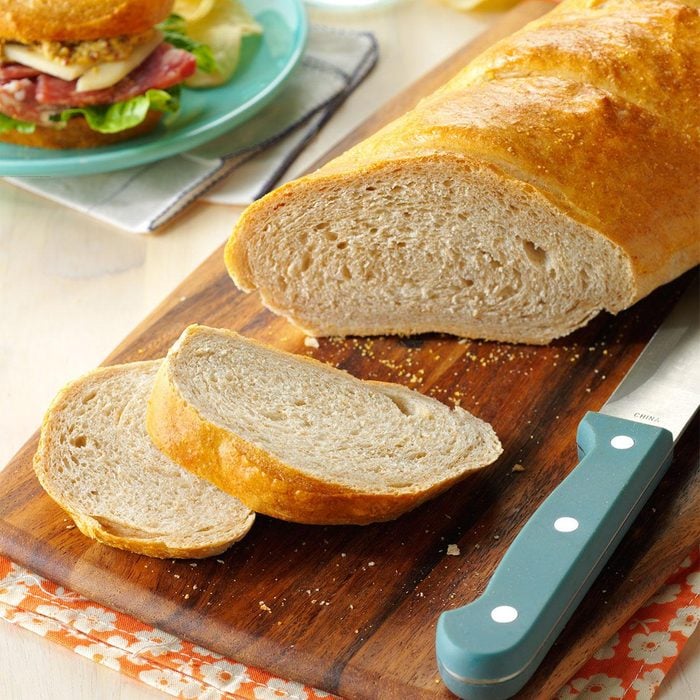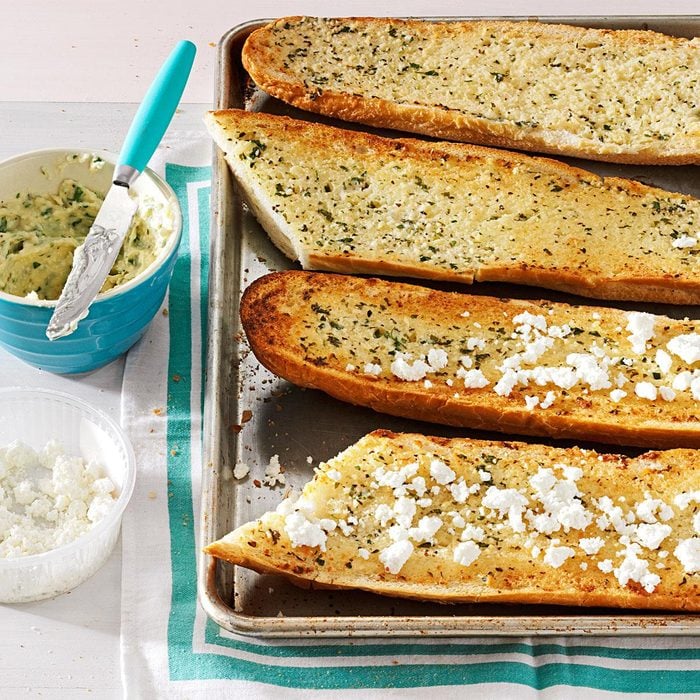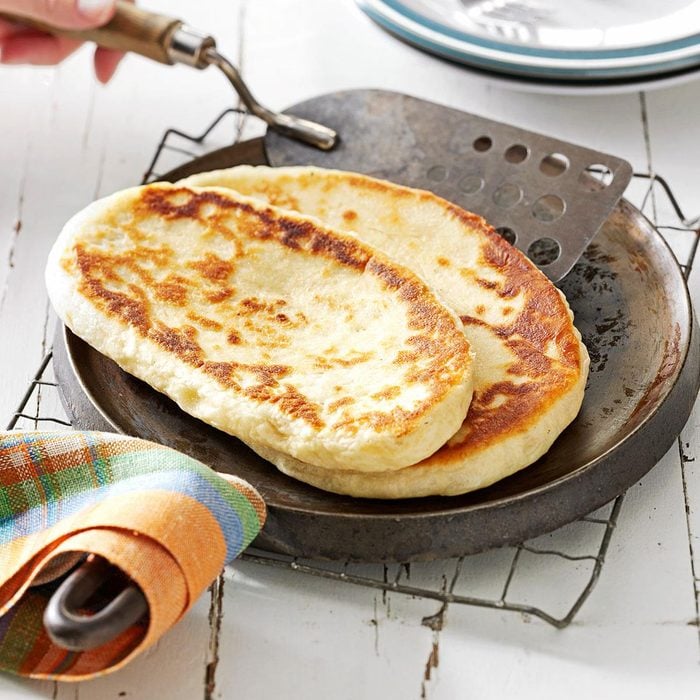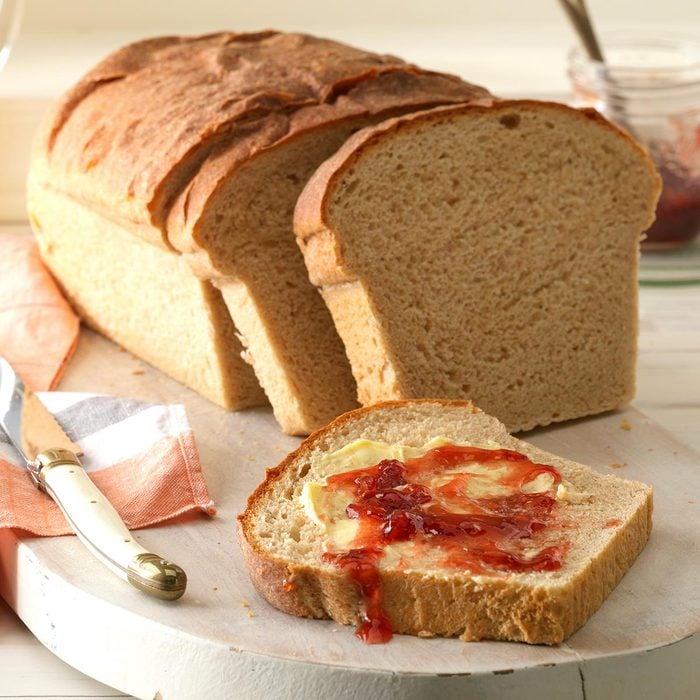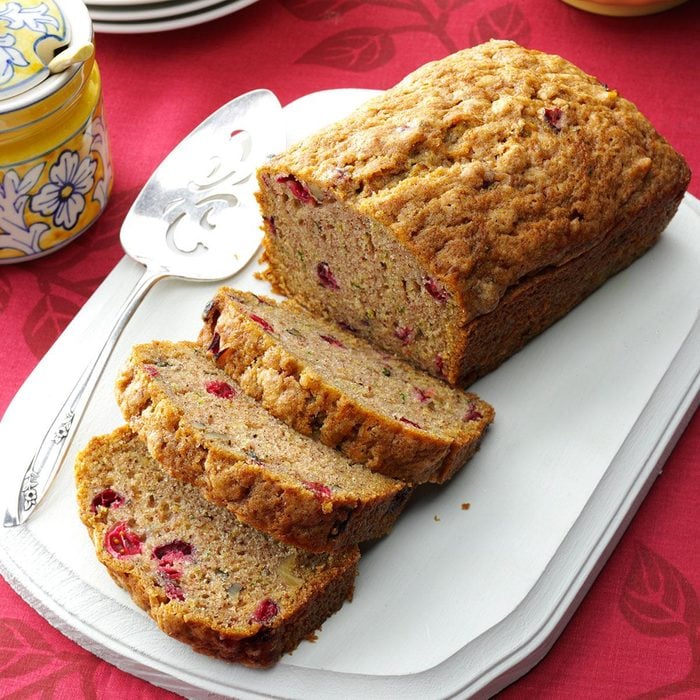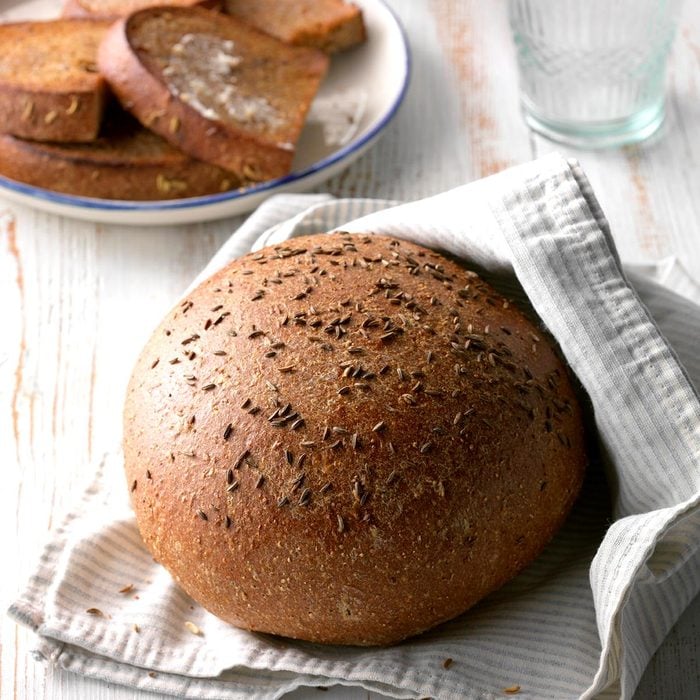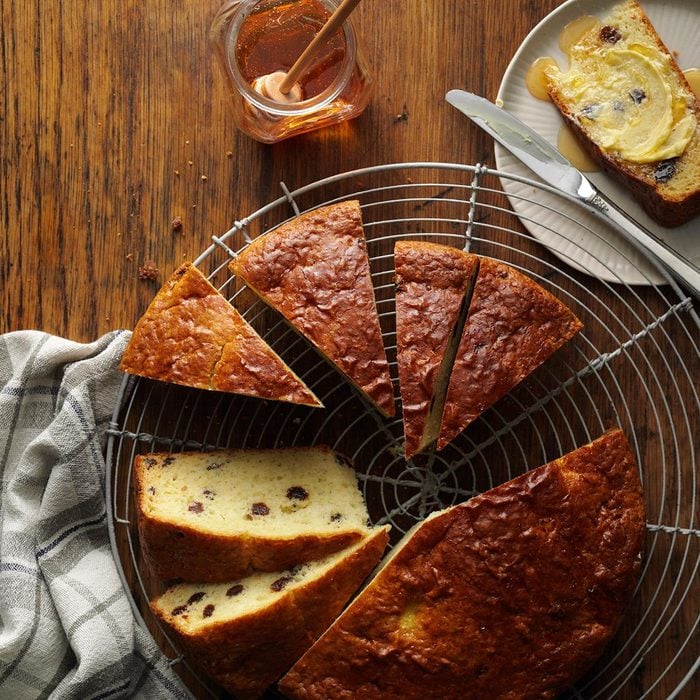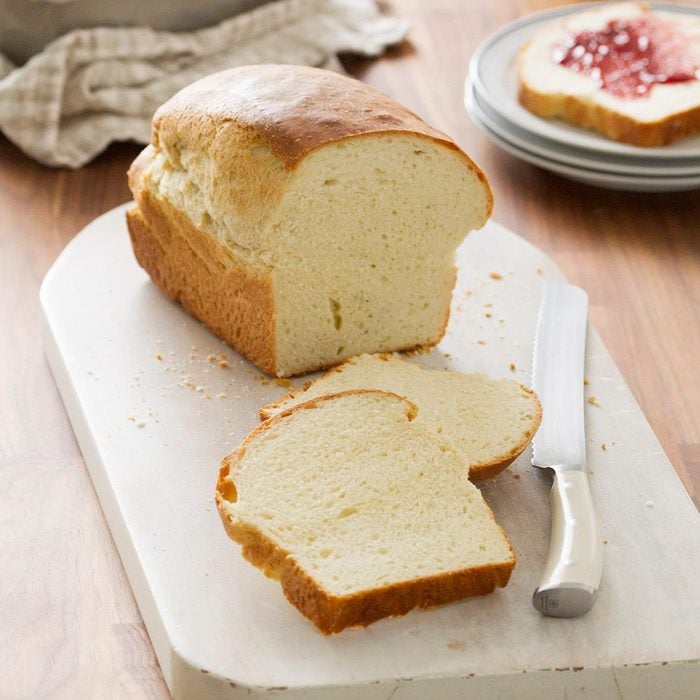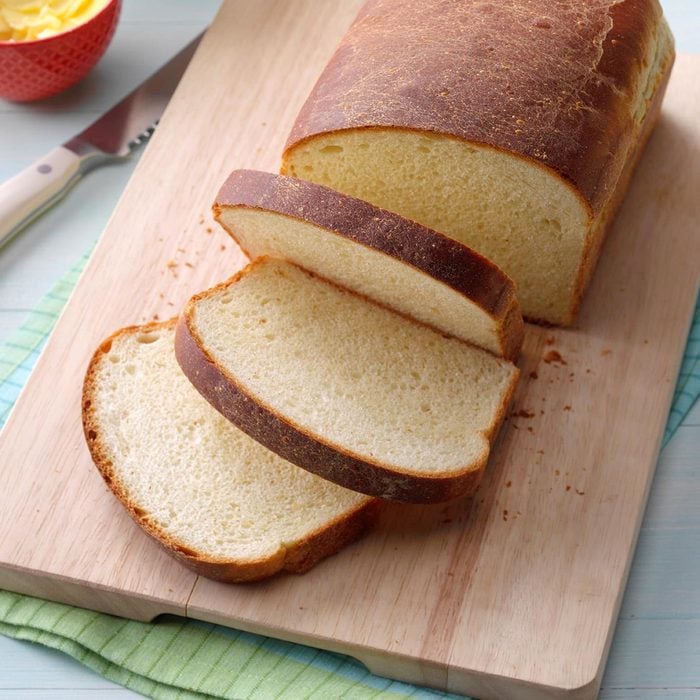Short of waiting outside the bakery at 4 a.m., slicing into home-baked bread is the freshest and most delicious way to enjoy it. The ingredients are usually simple, but little details about your method can totally change your end result. There’s no shortage of ways to make bread at home, but also plenty of ways to goof up. Here’s how to steer clear of the most common home-baked mistakes.
Why Is My Home-Baked Bread so Dense?
Often the simplest answer is the right one. Check out your rising agent—is your yeast expired? These things really do have a shelf life, losing potency over time. (Here are some other possible reasons why your bread isn’t rising.)
It’s a common error—you scoop a measuring cup into the bag of flour and go on your merry way. Often, though, this method of measuring really packs in the flour and results in too much flour in your recipe. Try spooning your flour into the measuring cup to keep from packing it down. You can also measure your flour by weight for ultimate precision. This is how to measure all your baking ingredients to get the lofty, open texture home bakers strive for.
The second rise, after your dough is shaped, should be no longer than 60 minutes in a warm spot. Once the dough has doubled in size, it’s time to bake. Too much rising at this stage can cause your dough to collapse in the oven.
Why Is My Homemade Bread Chewy?
Over-kneading has a tendency to result in chewy bread. Here’s how to tell if you’ve kneaded enough. Another possibility—you used bread flour when all-purpose flour would do. If a recipe with bread flour turned out chewier than you like, try it with all-purpose and knead only as much as the recipe directs. Check out this quick primer on the different types of flour you should be baking with.
Why Is My Homemade Bread so Dry?
Fats keep your bread moist. If your loaf was too dry, try adding a tablespoon or two more oil next time you make it. Likewise, water does more than hydrate your dough. It helps yeast do its thing, activates gluten and determines the volume of your loaf—all crucial for the right results. Even if you add the exact amount of water a recipe calls for, using too much flour can throw off your flour-to-water ratio.
Most bread recipes give a time range for baking—check your bread at the lower end of the range. Give your loaf a tap and listen for the hollow sound that lets you know the bread is done.
Pro Tip: You can mimic the steam injection commercial bakers’ process by making a water bath. Use a pan of cold water on a rack beneath your bread. Otherwise, bake your bread for the first half of its bake time inside a Dutch oven or casserole dish covered with foil or an oven-safe lid to trap moisture around your bread.
Why Does My Homemade Bread Taste Bland?
Resist the urge to just add more salt. Your bland bread could be the result of rushing the process. Try a slow overnight rise in the refrigerator. Plan ahead to proof your loaf overnight. This hands-off time in the icebox will slow the fermentation process in your dough and result in a complex-flavored loaf.
For more tips and tricks on baking the perfect, airy and tender bread, make sure you’re familiar with our ultimate baking guide.
Our Absolute Best Homemade Bread Recipes
The Best BagelWho has time to make from-scratch bagels? You do, with this easy recipe! The chewy golden bagels offer a hint of honey and will win over even the pickiest eaters. —Taste of Home Test Kitchen
Psst! Make bread a breeze with these essential
bread-making tools.
The Best Banana BreadWhenever I pass a display of bananas in the grocery store, I can almost smell the wonderful aroma of my best banana bread recipe. It really is amazingly good! —Gert Kaiser, Kenosha, Wisconsin
Need a refresher on bread baking? Check out our ultimate
bread baking guide for more tips and tricks.
The Best BiscuitsThe recipe for these four-ingredient homemade buttermilk biscuits has been handed down for many generations. —Fran Thompson, Tarboro, North Carolina
The Best BreadsticksPresent these delicious breadsticks alongside an Italian favorite like lasagna or spaghetti. They're an attractive and edible addition to the table setting! —Carol Wolfer, Lebanon, Oregon
The Best Brown BreadThis chewy, old-fashioned bread boasts a slightly sweet flavor that will transport you back to the old days. —Patricia Donnelly, Kings Landing, New Brunswick
The Best ChallahI use these shiny, beautiful loaves as the centerpiece of my spread. I love the taste of honey, but you can also add chocolate chips, cinnamon, orange zest or almonds. Leftover slices of this sweet challah recipe work well in bread pudding or for French toast. —Jennifer Newfield, Los Angeles, California
The Best CornbreadServing this moist cornbread to family and guests is a pleasure. Honey gives the bread a slightly sweet taste, and most people find it difficult to eat just one piece. —Adeline Piscitelli, Sayreville, New Jersey
The Best Dinner RollsThese soft rolls are out of this world. The addition of oat makes them a little heartier than other dinner rolls. —Patricia Rutherford, Winchester, Illinois
The Best English MuffinsWhen I was growing up on a farm, my mom always seemed to be making homemade bread...nothing tasted so good! Now I like to make these simple yet delicious muffins for my own family. —Linda Rasmussen, Twin Falls, Idaho
The Best FlatbreadMy family loves this as a pizza crust. But with a touch of olive oil and fresh herbs it makes a lovely flatbread appetizer. —Sue Brown, West Bend, Wisconsin
The Best FocacciaMy family eats this flavorful bread as fast as I can make it. Sometimes I add different herbs, red onion or crumbled bacon. It's one of my best recipes!
—Mary Cass, Baltimore, Maryland
The Best French BreadThe first time I made this recipe my husband asked it if was homemade or store-bought. When he reached for a second piece, I knew I had a winning recipe. —Roseann Loker, Colon, Michigan. If you enjoyed this recipe, learn how to make
fougasse.
The Best Garlic BreadYou'll love the fresh garlic and herbs in this recipe. The mild goat cheese that’s sprinkled on top makes it extra rich and wonderful. —Taste of Home Test Kitchen
The Best NaanChewy yeast-raised flat bread is a snap to make in a bread machine. Serve naan with your favorite Indian dish to soak up the curry and sauces. —Shannon Ventresca, Middleboro, Massachusetts
Don't miss our whole list of
easy bread machine recipes!
The Best No-Knead BreadHere's a very easy way to have homemade bread for dinner tonight. Don't worry if you're new to baking. Anyone who can stir can make this no knead bread a success! —Heather Chambers, Largo, Florida
The Best Potato BreadA tasty mix of whole wheat and all-purpose flour and a small amount of mashed potatoes combine to give this golden bread its wonderful texture. The loaf is very moist and stays that way for days. —Sue Violette, Neillsville, Wisconsin
The Best Quick BreadNutmeg and cinnamon add spice to these flavorful loaves. The flecks of green zucchini and red cranberries give each slice a festive look that's just right for the holidays. —Alice Manzo, South Easton, Massachusetts. Looking for more recipes? Serve them
Rosca de Reyes, a bread eaten in Mexico and Central America just after Christmas.
The Best Rye BreadThis gorgeous rye bread has just a touch of sweetness and the perfect amount of caraway seeds. With a crusty top and firm texture, it holds up well to sandwiches, but a pat of butter will do the job, too. —Holly Wade, Harrisonburg, Virginia
The Best Soda BreadMy best friend, Rita, shared this irresistible Irish soda bread recipe. It bakes up high, with a golden brown top and a combination of sweet and savory flavors. —Jan Alfano, Prescott, Arizona
The Best SourdoughFor many years, I've been making 45 loaves of this bread for an annual Christmas bazaar, where we feed bread and soup to over 300 folks. — Beverley Whaley, Camano Island, Washington
The Best TortillaI usually have to double this flour tortilla recipe because we go through them so quickly. The homemade tortillas are so tender and chewy, you’ll never use store-bought again after learning how to make tortillas. —Kristin Van Dyken, Kennewick, Washington
The Best White BreadAnytime is the right time for a comforting slice of homemade bread. These loaves are especially nice since the crust stays so tender. This white bread recipe is my husband Nick's favorite. He makes most of the bread at our house. —Joanne Shew Chuk, St. Benedict, Saskatchewan
The Best Whole Wheat BreadI'm 12 years old and make this bread with my mother, who got the recipe from her mother. I usually prepare the dough, and my mom bakes it. —Freida Stutman, Fillmore, New York
The Best Yeast BreadMy stepmother gave me the recipe for a delicious yeast coffee cake shaped into pretty rings. When I make it for friends, they always ask for seconds. —June Gilliland, Hope, Indiana
Up Next: The Best Bread Recipes of 2023


